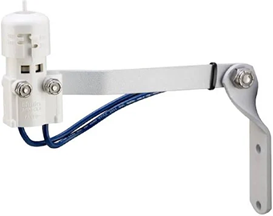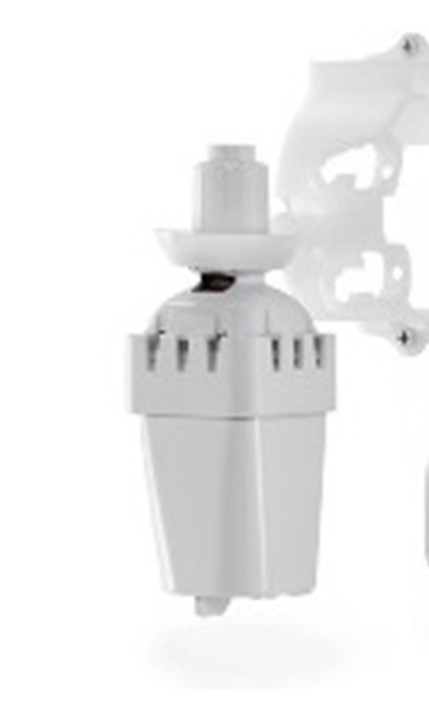It has one job: to skip a scheduled irrigation cycle if it’s raining or has rained, helping you save water and money.
We’ve all seen it. Someone’s sprinkler system watering the yard in the middle of a rainstorm. If you have an automatic irrigation system, a rain sensor is an important — and necessary — component to prevent unnecessary watering.
It has one job: to skip a scheduled irrigation cycle if it’s raining or has rained. This is how it helps you save water and money. All irrigation systems within San Antonio city limits are required to have a functioning rain sensor.
How rain sensors work
They don’t magically “sense” rain, but they do respond to it mechanically. There are porous cork discs inside. When these get wet, they absorb water and expand, interrupting the electric signal that normally opens sprinkler valves (you may see a red light on the irrigation controller, and possibly an umbrella on the LCD screen.) This interruption is temporary. When the cork dries out and shrinks back to its normal size, the sensor lets your controller go back to its normal watering schedule.
How much rain is enough for a rain sensor to block irrigation?
There is a lot of debate about how much water is enough for your landscape. But there is much less confusion about how much rain it takes for a rain sensor to block an irrigation system from turning on. That’s because most rain sensors have sensor caps that can be adjusted by notches that correspond with approximate inches of rain necessary to trip the switch.
There are usually four options: 1/8 inch, ¼ inch, ½ inch and ¾ inch. Which setting you use depends on the time of year:
- 1/8 and 1/4 inches are good settings in spring (April to June) and fall (October and November.)
- ½ inch is a normal setting during normal Texas summer heat (from June to September).
- In winter when plants are dormant (November to March) you can just leave irrigation off.
You’ll have to figure out your sweet spot. My default is to always go with 1/8 inch to save the most water and dial up if needed.
Is my rain sensor working?
One way to know is to wait for a big thunderstorm and turn on your irrigation system. If it comes on and waters in the rain, chances are your rain sensor is either turned off (look for the bypass switch) or not functional at all.
But there’s a much more practical way to test a rain sensor.
- Locate the rain sensor. Most sensors are easily visible, mounted to fences. If the sensor is on the eaves of the roof, you may need a stepladder to reach it.
- Turn on an irrigation zone within sight of the rain sensor when it’s dry outside.
- Locate the spindle protruding from the top of the sensor cap. (It should have a springy feel, like the top of a click pen.) Press the spindle down and hold it down.
- While holding the spindle down, the irrigation system should shut off (sprinkler heads will drop down as the PVC pipe empties). When you release the spindle, the sprinkler heads should pop back up and turn on.
- Remember some valves are slow to close, so this quick test can take up to thirty seconds.
Keep in mind that some controllers have weird behavior built into their software, where upon activating the sensor, the controller will remain off for a longer period. (It’s annoying when you’re trying to test them, I’m not a fan.) But have patience when testing in case you have either of these situations.
If pushing the spindle down does nothing to stop the irrigation system, your sensor is not working properly.
What kind of rain sensor is right for me?
There are three kinds of rain sensors, each with pros and cons.
 Wired rain sensors are affordable and reliable. Just make sure nothing nicks or cuts the wire, or the sensor won’t work.
Wired rain sensors are affordable and reliable. Just make sure nothing nicks or cuts the wire, or the sensor won’t work.- Wireless rain sensors are also easy to install. (You’ll see a transmitter mounted on the garage wall next to the irrigation controller.) Wireless sensors have watch batteries in them that do need to be checked and replaced.

- Smart Controllers connect not to an on-site rain sensor but to a nearby weather station. This enables the irrigation controller to have much more information than just “wet” or “dry” — they will also know the temperature, humidity, wind speed, daylight hours, and amount of recent rain. This lets the controller automatically adjust irrigation to cooler or rainier weather. But in our Texas summers, the triple digit heat can cause the smart controllers to come on more than once a week. This is not allowed during Stage One or Stage Two watering rules.
Rain sensors and smart controllers are available at most home improvement stores and local irrigation supply stores. SAWS even has a $100 coupon for a smart controller. Check it out here.
Save Water – Save Money. Wasted water = wasted money. Rain sensors help homeowners to conserve both valuable resources!


